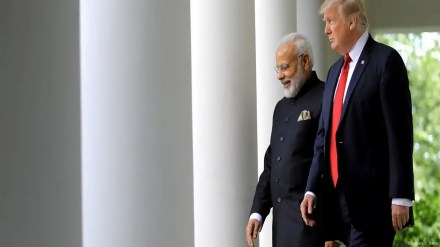Donald Trump’s stunning return to the White House requires India to be more circumspect regarding its external-sector policies, including strategic and economic ones, but is unlikely to be unsettling for New Delhi as many would fear. There is little chance of any loss of India’s access to multiple weapon and other technologies as a virtual constituent of the Nuclear Suppliers Group, or undermining of its stature as a potential counterweight to China in the Indo-Pacific. This is because strategic ties in this regard are more or less entrenched, and are fully in Washington’s interests. Trump’s threat of tariff hikes for China, India, and others, if carried out in magnitudes corresponding to how he has articulated it — 60% on China and 20% across the board — would indeed jack up global prices of commodities and finished goods. This and the potential expansionary fiscal policies by Trump 2.0 could raise global inflation, delay or lessen the extent of rate cuts by the Federal Reserve and peers, and dry out capital inflows into India. The Reserve Bank of India, faced with a new bout of inflation, amid a weakening of consumption demand, could find itself in a more unenviable position with high-priced imports inflating domestic prices, while having to prevent the rupee from falling too much, against a stronger dollar.
For India, which is already facing a slowdown in aggregate demand, and a consistent drag on its gross domestic product from its negative “net exports”, these developments could mean significant adversities in the short term. Around 18% of India’s merchandise shipments and half of services exports are to the US. Any potential trade gains for India from China’s reduced access to the US markets or the west’s China Plus One strategy would be limited, and confined to a few areas, as competition is severe from Southeast Asia and elsewhere. To be sure, a large part of India’s goods exports to the US (over $75 billion each in the last three financial years) are of low-value-addition petroleum products, and gems and jewellery, where any additional tariffs would hit India. However, as a big supplier of branded generic drugs to the US market, India might not face big problems, as Trump won’t want to raise healthcare costs of his people. Although Trump calls India a “tariff king” and the country’s average tariffs have inched up from a low of 13% in 2009 by over four percentage points, the country’s Customs revenue being just 4% of import value shows the actual barriers are not that high. Any curbs on H1B visas is another potential negative fallout for India from Trump 2.0. However, the implications of the Trump presidency through his full second term could still turn out to be rather benign for India. It is unlikely that Trump would force any course change for the assorted technology agreements between the two countries signed during the previous regimes, including the Biden administration.
The US is also likely to invest at a greater pace in India, given the reliance of the Big Tech and American defence giants on the large Indian markets, and opportunities the country provides for investors in long-gestation infrastructure projects, and frontier manufacturing sectors. Trump’s protectionist rhetoric is unlikely to be matched in action, given that an untrammelled version of it could harm the American economy as much as the global output. Over the course of time, reality would bite hard, and he would have to tone down the rabid policies. Trump’s disavowal of multilaterally designed climate change goals could mean a reduced policy emphasis on green energy and CO2 reduction technologies. While this would indeed be detrimental to the paradigm of sustainable development, its adverse effect on India could be counterbalanced by an incidental larger avenue for it to raise thermal power capacities in the medium term.
